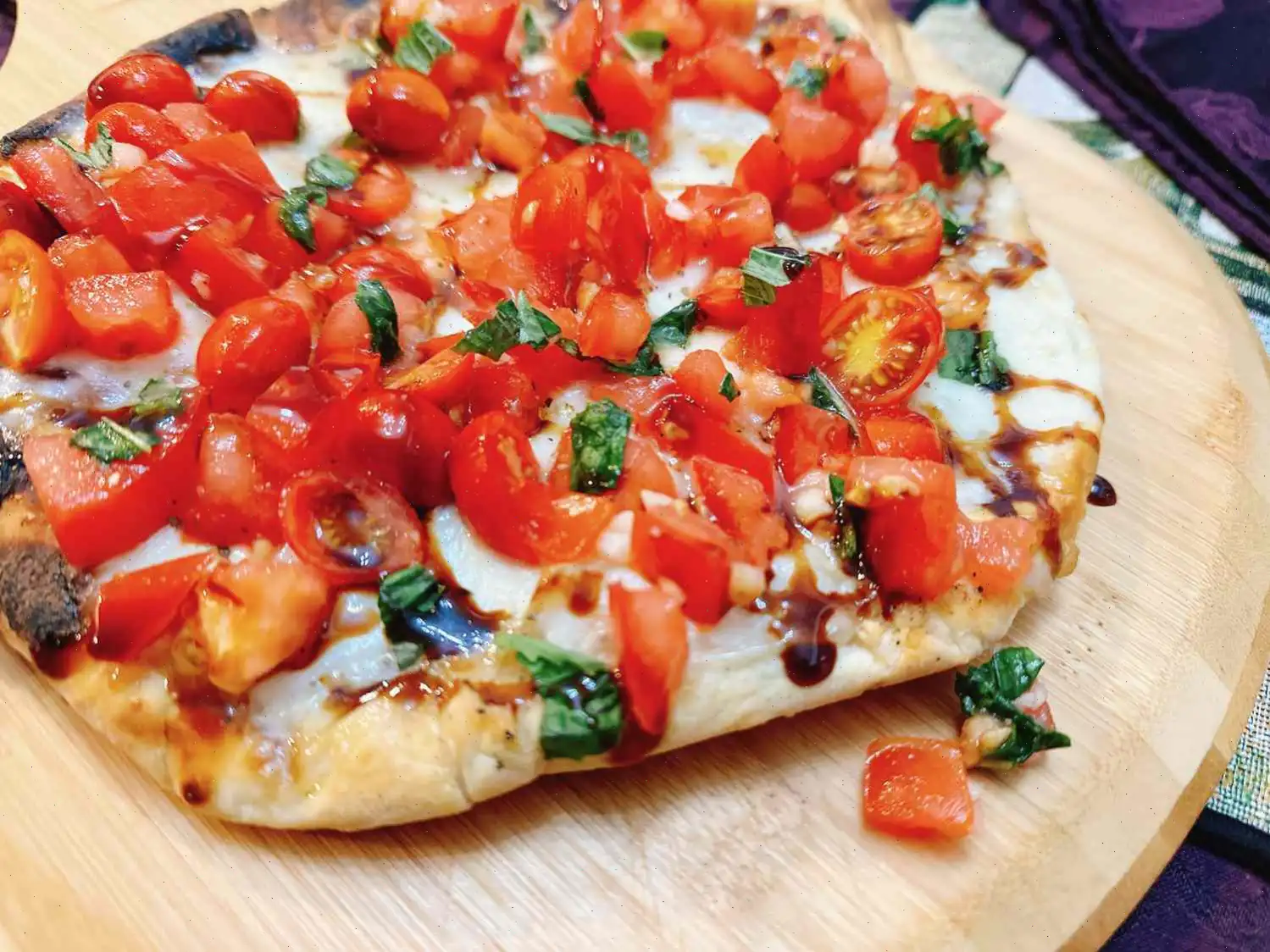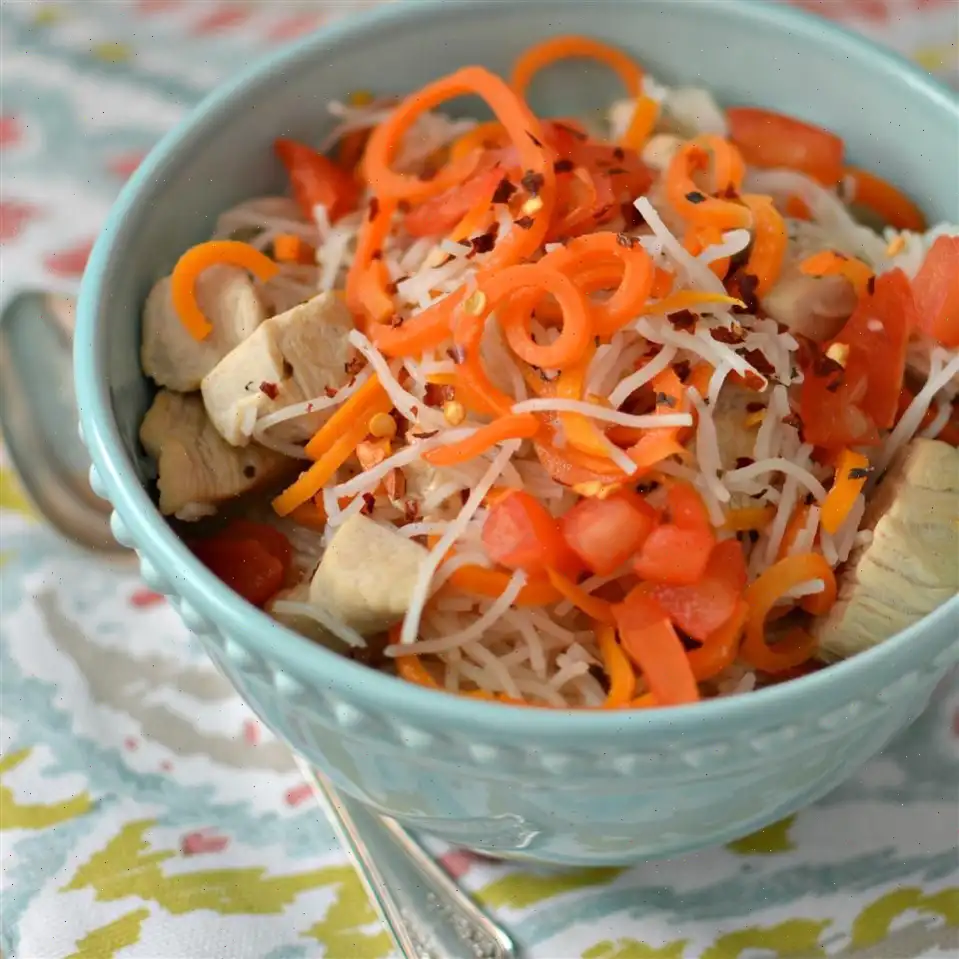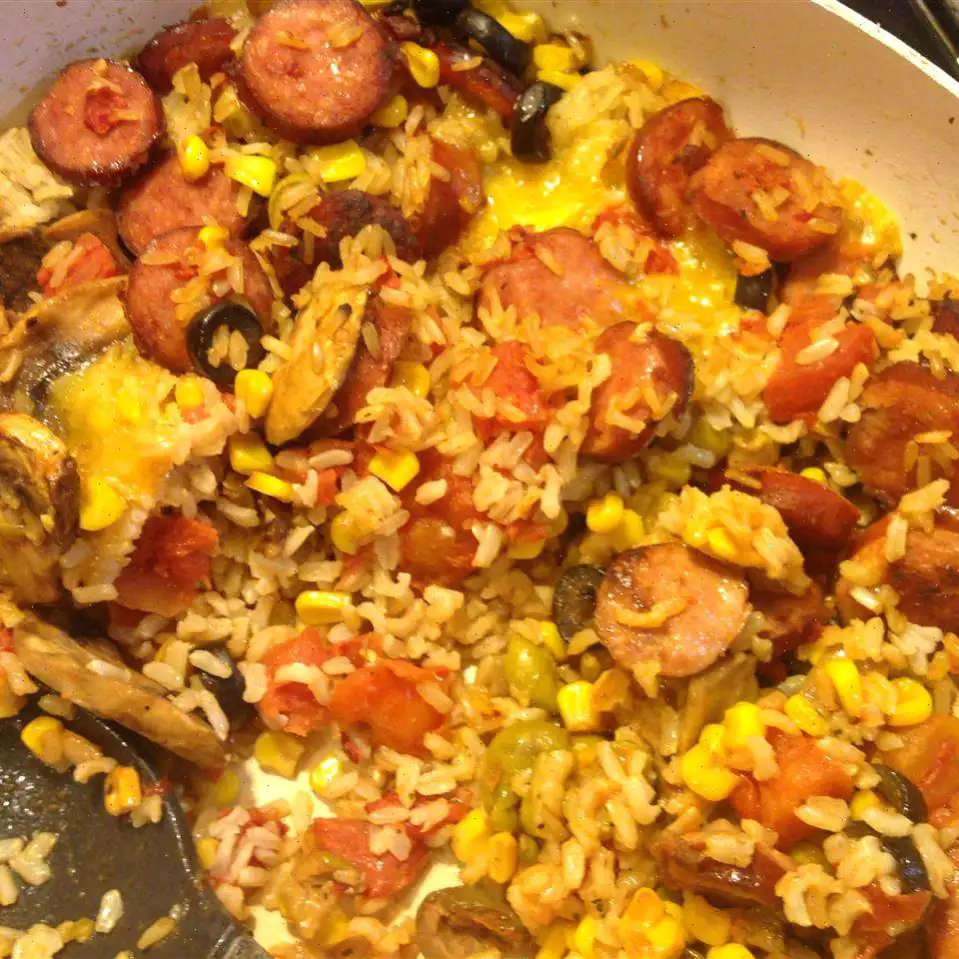
Bruschetta Pizza Recipe
Ingredients
- 1 pound prepared pizza dough
- 2 tomatoes, seeded and chopped
- 2 cloves garlic, minced
- 4 basil leaves, torn
- Salt and ground black pepper, to taste
- 2 teaspoons olive oil
- 1 pinch garlic powder
- 5 (1 ounce) slices fresh mozzarella cheese, or as needed
- 1 tablespoon balsamic glaze, or as needed
Directions
Step 1: Preheat a gas grill with all burners on High for 10 to 15 minutes. While the grill is heating up, shape the pizza dough into a desired round or oval shape.
Step 2: In a small bowl, stir together the tomatoes, garlic, and basil. Season with salt and black pepper to taste. Set the mixture aside.
Step 3: Reduce the flame on half of the grill burners to Low, creating areas of both direct and indirect heat.
Step 4: Carefully place the dough onto the grill over direct heat. Close the grill cover and cook until the bottom of the dough is just barely cooked and shows char marks, about 1 to 3 minutes.
Step 5: Use tongs to flip the pizza dough over. Move the dough to the indirect heat area of the grill. Brush the top of the dough with olive oil and sprinkle with garlic powder.
Step 6: Place mozzarella slices evenly on top of the dough. Close the grill cover and grill until the cheese is melted, about 3 minutes.
Step 7: Carefully remove the pizza from the grill. Top with the prepared tomato bruschetta mixture and drizzle with balsamic glaze. Slice into wedges and serve immediately.
Cook's Notes
- I split my dough in half and got 2 pizzas, enough for 3 slices each.
- Fresh mozzarella cheese is recommended for its superior melting quality compared to pre-shredded cheese.
Nutrition Facts (per serving)
| Calories | 443 |
| Total Fat | 15g (19% DV) |
| Saturated Fat | 5g (27% DV) |
| Cholesterol | 28mg (9% DV) |
| Sodium | 712mg (31% DV) |
| Total Carbohydrates | 61g (22% DV) |
| Dietary Fiber | 4g (14% DV) |
| Total Sugars | 9g |
| Protein | 16g (33% DV) |
| Vitamin C | 22mg (24% DV) |
| Calcium | 212mg (16% DV) |
| Iron | 4mg (20% DV) |
| Potassium | 486mg (10% DV) |
The Story Behind Bruschetta Pizza
Bruschetta pizza is a delightful fusion of two iconic Italian culinary traditions: bruschetta and pizza. Bruschetta itself dates back to the 15th century in Italy, originally created as a simple way to use up leftover bread. Farmers would grill slices of bread, rub them with garlic, drizzle olive oil, and top them with fresh seasonal ingredients, such as tomatoes and herbs. Pizza, on the other hand, has roots in Naples in the 18th century, where flatbreads were topped with tomato, cheese, and local ingredients for a hearty, affordable meal. Combining these two traditions, bruschetta pizza merges the fresh, vibrant flavors of a classic bruschetta topping with the warm, comforting base of pizza dough, creating a dish that is both rustic and refined.
Regional Characteristics
While bruschetta pizza is enjoyed worldwide, its origins remain distinctly Italian. In Tuscany, where traditional bruschetta was first popularized, the emphasis is on high-quality, fresh ingredients, particularly ripe tomatoes, extra virgin olive oil, and fragrant basil. The pizza dough in this region is typically light and airy, reflecting the Neapolitan influence. In other regions of Italy, variations may include local cheeses such as pecorino or regional herbs like oregano and rosemary. This adaptability allows bruschetta pizza to reflect regional tastes while remaining true to its Tuscan roots.
How It Differs From Similar Dishes
Unlike traditional pizza, which often has a cooked tomato sauce spread over the dough, bruschetta pizza uses a fresh, uncooked tomato topping placed on the pizza after baking. This distinction creates a contrast between the warm, crisp dough and the cool, juicy bruschetta topping, giving the dish a unique texture and flavor profile. Unlike standard bruschetta, which is served as an appetizer or snack, bruschetta pizza functions as a main course, combining the portability of pizza with the freshness of a salad-like topping.
Where It Is Typically Served
Bruschetta pizza is commonly found in Italian trattorias and pizzerias, especially those emphasizing farm-to-table ingredients. It is also popular at outdoor gatherings, barbecues, and casual home dinners because it can be easily prepared on a grill or in an oven. This versatility makes it a favorite for summer meals, picnics, and social events where fresh, vibrant food is appreciated. Many restaurants present it as a light, sophisticated alternative to heavier, cheese-laden pizzas.
Interesting Facts
- Bruschetta pizza preserves the nutritional benefits of fresh tomatoes, including antioxidants like lycopene.
- The dish exemplifies the Italian culinary philosophy of using simple, high-quality ingredients to achieve maximum flavor.
- Grilling the pizza dough before adding the bruschetta topping enhances the smoky flavor and adds a subtle char, reminiscent of traditional Tuscan cooking methods.
- Bruschetta pizza can be adapted for seasonal ingredients, such as adding roasted peppers in autumn or fresh strawberries in summer, creating endless variations.
- It is considered a lighter alternative to heavy pizzas, making it popular among health-conscious diners seeking authentic Italian flavors without excess cheese or sauce.








